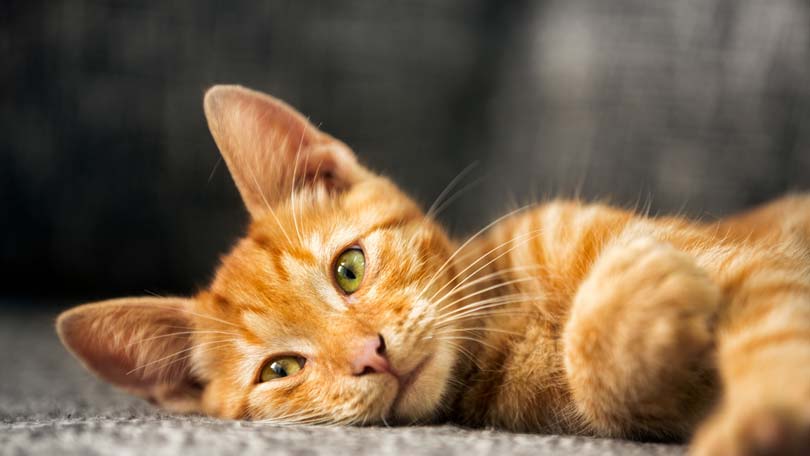
You step into the living room and suddenly notice that the bottom of your brand new couch has been ripped to shreds. Kitty has done it yet again. Instead of losing your cool, relax. Here is some information to help you better understand why cats scratch, and the different humane measures that can be taken to correct this behavior, such as scratching posts placed strategically in your home.
When cats attach their claws to an object and pull and scratch at the object, whether it be a couch, a bed, or the floor, they are doing it to stretch their back and to sharpen their nails. In some cases, cats scratch to shed an old nail sheath that is hanging off. You will sometimes see these nail remnants laying around on the floor.
But we as humans cannot tolerate a cat that constantly scratches our things, especially expensive things. We sometimes can’t relate to the fact that cats are animals, and will sometimes do what animals do. They don’t understand why an object is of increased value to us, that is why training is necessary. Many people believe that cats cannot be trained, but that is false. Effective cat training has been achieved in many households; patience, information, and a lot of treats are required.
So how do you allow a cat to perform its necessary regular stretching and nail sharpening rituals while protecting your valuables? Some people put aluminum foil and double sided tape on their couch or bed to discourage scratching, while others spray orange solutions and other repulsive smelling products to areas that they want to stop their cats frequenting. Still others participate in the inhumane act of declawing their cats, rendering them defenseless against other animals. That is not right. So instead of being cruel to kitty, another option is to buy a scratching post for him or her to use.
These posts come in varying forms. Most major pet stores will carry several sizes. There are many options, from small ones that you can hang on a door, to larger posts that have twists and turns for the cat to navigate through, giving them several options for their scratching needs.
Hanging scratching boards are ideal because they are held in place by the closed door they are hung from. This provides an optimal opportunity for the cat to have a good stretching session. Some retailers sell scratching boards that have catnip built in and bells attached that ring while the cat is scratching. Cats love the sound of a mildly ringing bell.
The taller the post the better. A post that stands at at least two feet will allow the cat to get a full body stretch for its back and shoulder muscles.
Sisal posts are preferred by cats because they are made from sisal fabric. Sisal is a woven material that is irresistible to cats and allows for the ultimate scratching and shredding experience for them.
Certain cats prefer a more natural feel when it comes to the material they want to scratch. Natural wood scratching boards are available that are made of real wood to entice outdoorsy cats. There are also wood posts that imitate the grooves (bark) of a wood log.
Some cats even prefer plain old cardboard to dig their claws into. Try leaving a piece of a box laying around, and inspect for claw marks to see if that is doing the trick. Alpine scratching boards are made of cardboard, come with catnip, and are grooved to allow cats to really get their claws inside.
Sometimes it is difficult to get an older cat to behave and use scratching boards instead of your nice $1,000 couch. Hanging catnip on the board will usually serve to attract the cat to the board. When they reach out for the catnip, they will most likely snag a nail on the scratching board and realize that that feels good. Temporarily placing the post directly near or onto the place where kitty loves to scratch may also encourage the cat to use it instead of furniture.
Posts should be placed in an area of the house that gets high traffic; it should not be placed in a back corner or closet. A lot of the time, a cat will also scratch to mark their territory on something that occupies an important space in the household. So be sure to put the post in a room that is significant to the family, such as the living or dining room.
Another way to encourage use of the post is to give your cat positive reinforcement whenever it goes near the post or actually uses it. This is where the cat training comes into play. While the cat is using the post, even if it is just pawing at the object, coo and say “Good girl!” to show them that this is good behavior. Before it leaves the area, give the cat a treat to help encourage it to do the same thing again.
Do anything but declaw your cat. Declawing a cat is equivalent to cutting off their hands and feet. Their claws, and to a lesser degree their teeth, are their only defense mechanisms when in distress. If you declaw your cat you can never allow it to see the light of day. God forbid it escapes your home and gets lost in the wilderness, the chances of your cat returning home intact are slim to none. If it encounters any wild animal or another aggressive cat it will be defenseless without its claws. Declawing also has been shown to make cats less passionate about life, unhappy, and lazy.
If your cat is scratching up your furniture, now you know why. It helps to develop an understanding of why your cats participate in certain behavior. It’s usually not because they are bad—it’s because they are operating on instinct. So don’t pull out your hair, just get the proper tools and education you need, such as a good scratching post, to end the destructive scratching behavior of your cat.





